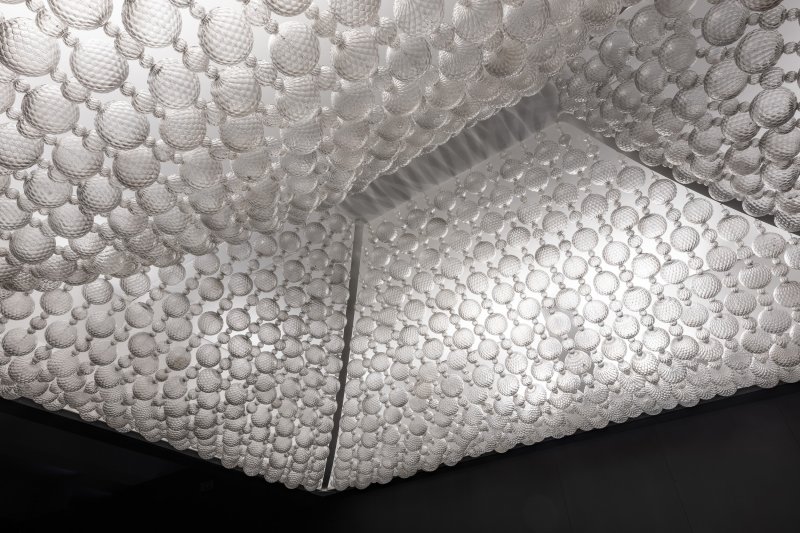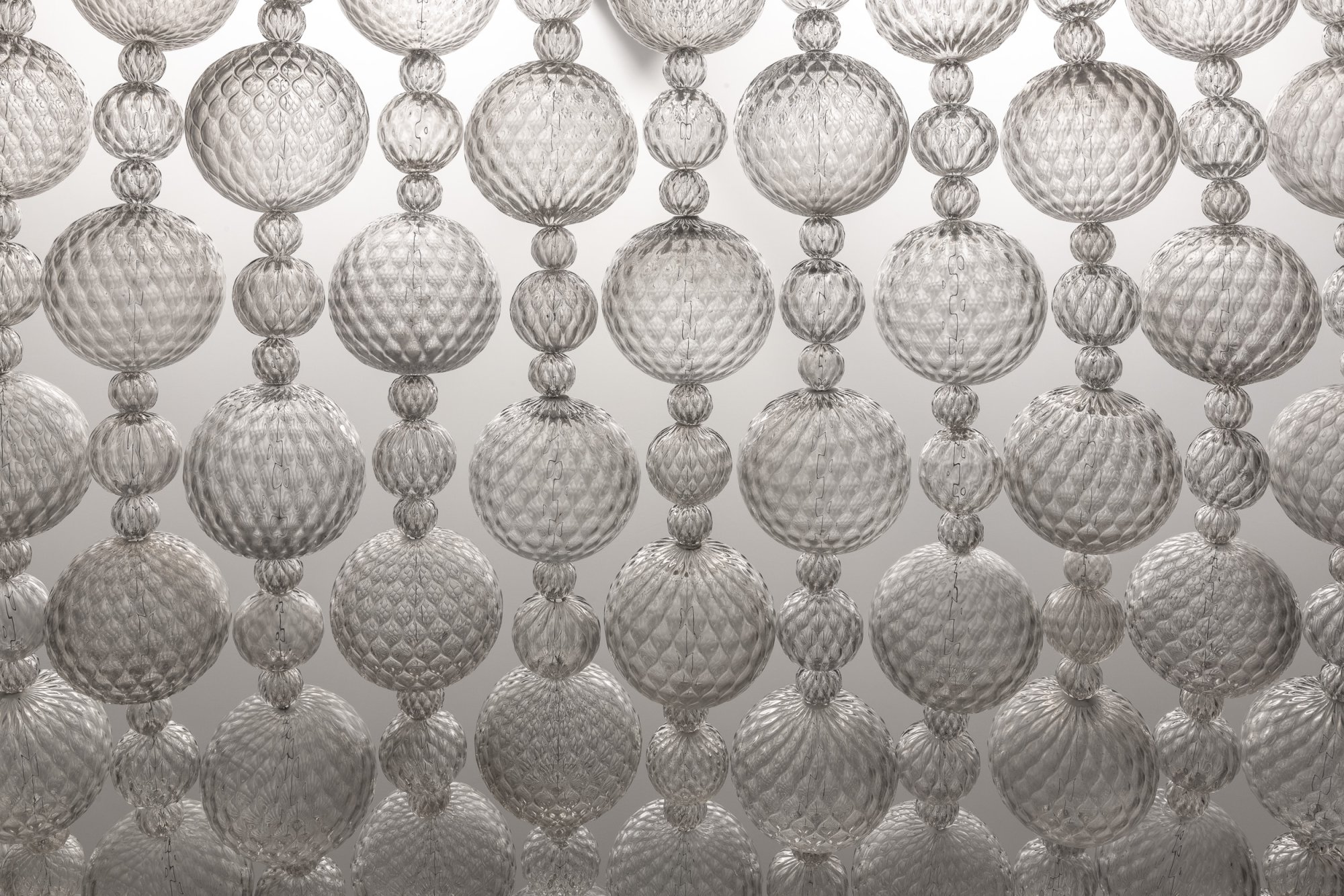The Venini velarium at Palazzo Grassi
As part of the initiatives dedicated to an in-depth exploration of the history of its locations, Palazzo Grassi - Punta della Dogana invited glass historian Carla Sonego to reconstruct the events in the life of the Venini velarium, a vast glass artefact that was made by Paolo Venini’s glassworks.
As part of the initiatives dedicated to an in-depth exploration of the history of its locations, Palazzo Grassi - Punta della Dogana invited glass historian Carla Sonego to reconstruct the events in the life of the Venini velarium, a vast glass artefact that was made by Paolo Venini’s glassworks in Murano as a decorative piece for the atrium of Palazzo Grassi between 1951 and 1985, when it was the exhibition venue for the Centro Internazionale delle Arti e del Costume.
In 1949, after having changed hands several times, Palazzo Grassi was purchased by an entrepreneur from the Società Immobiliare Veneta, Franco Marinotti, a majority shareholder of chemical manufacturer SNIA Viscosa who decided to transform the building into an exhibition centre, entrusting the renovation works to architect Giuseppe de Min, with the assistance of Angelo Bianchetti and Cesare Pea. This resulted in the building undergoing some significant structural changes, most notably to the column-lined atrium, which was covered with a large glazed skylight. In order to screen out the incoming natural light from the space which, consequently, became a large indoor hall - along with the structure of the skylight itself - Paolo Venini’s glassworks was commissioned to create a velarium which was unveiled for the first time on 23 August 1951, the official opening of the exhibition schedule of the Centro Internazionale delle Arti e del Costume.
A series of festoons with Balloton crystal glass spheres of three different sizes, joined together using steel cables and repeated according to a regular rhythm. The festoons are hooked onto a rectangular plate and, hanging down, formed four curved translucent walls: an image reminiscent of how a soft veil moves, transforming the courtyard into a ‘luminous hall with a ceiling of glass globes’, as stated in the catalogue for the exhibition ‘Venini: Light 1921-1985’ at LE STANZE DEL VETRO.
The velarium is an iconic artefact, a symbol of the finest Venetian master craftsmanship representative not only of the art of glassmaking, but also of the prestige of Italian creativity and Venini’s international renown as a brand. The creation would remain in place for around thirty years until, with the FIAT group’s acquisition of the space, it was finally taken down and dismantled during the initial stages of the restoration of Palazzo Grassi, started in 1985 under the supervision of architects Gae Aulenti and Antonio Foscari.
The event was organised as part of the exhibition ‘Venini: Light 1921-1985’, curated by Marino Barovier at LE STANZE DEL VETRO on the island of San Giorgio (Venice), which features a reduced-scale installation of the building’s velarium which, more than forty years later, finally allows visitors to see it in all its original splendour.
Listen to the full story behind the Venini velarium in the words of glass historian Carla Sonego:
Una serie di festoni con sfere di vetro cristallo balloton di tre misure diverse, collegate per mezzo di cavi d’acciaio e ripetute secondo un ritmo regolare. I festoni si agganciavano a una piastra rettangolare e, pendendo verso il basso, formavano quattro pareti ricurve semitrasparenti: un’immagine che ricordava il movimento di un morbido velo e che trasformava il cortile in un “luminoso salone dal soffitto a globi di vetro”, come riporta il catalogo della mostra “Venini: Luce 1921-1985”.
Il velario è un manufatto iconico, un simbolo della migliore maestria artigianale veneziana legata all'arte del vetro, al prestigio della creatività italiana e di un marchio come Venini, riconosciuto a livello internazionale. La creazione rimarrà in loco per una trentina d’anni finché, con l’acquisizione dello spazio da parte del gruppo FIAT, non viene definitivamente smontata, durante le fasi iniziali del restauro di Palazzo Grassi iniziate nel 1985 e condotto dagli architetti Gae Aulenti e Antonio Foscari.
L'appuntamento nasce in occasione della mostra “Venini: Luce 1921-1985” a cura di Marino Barovier presso le LE STANZE DEL VETRO sull’Isola di San Giorgio, poiché vi è esposta un'installazione in scala ridotta del velario del palazzo che, dopo oltre quarant'anni, permette di rivederlo nel suo originale splendore.
Ascolta la storia completa del velario Venini attraverso le parole della storica del vetro Carla Sonego :

